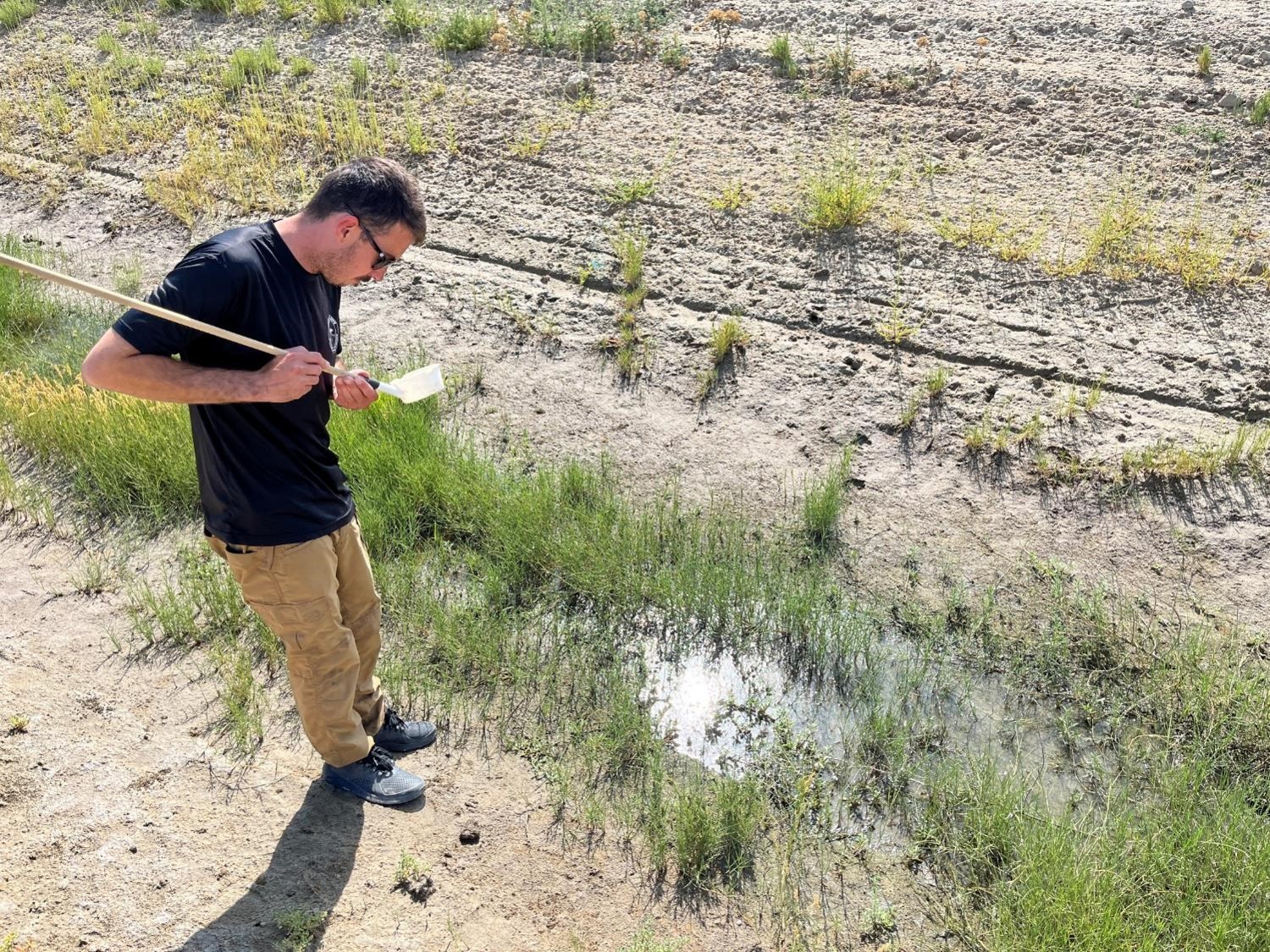Managing Correctional Facility Mosquitoes Now, Acquiring Skills for Later

by Emma K. Tribble
As much as we would love to put all mosquitoes behind bars, it turns out they’re a pest in prisons too.
There have always been mosquitoes in the 30,000 acres of wetlands northwest of Salt Lake City, Utah, but there was no permanent human presence there until recently. Then the opening of the Utah State Correctional Facility in this area brought more than 4,000 warm bodies for mosquitoes to feed on, including facility staff, inmates and visitors.
“As soon as the correctional facility opened, we started getting phone calls and emails from loved ones or friends of the inmates or some of the staff saying, ‘We step outside and just get swarmed with mosquitoes,’” said Dr. Michele Rehbein, education specialist at the Salt Lake City Mosquito Abatement District. “So that’s a big thing. We want to make sure people aren’t getting attacked.”
The abatement district started by giving facility staff recommendations for reducing the impact of the mosquitoes, including changing watering schedules to avoid pooling water, setting mosquito traps in the visitors’ lobby and encouraging staff to wear insect repellent.
Then the project grew to help staff and inmates alike.
Unlike staff who get to leave the area at the end of their shifts, the inmates are there 24/7. So, with funding from the Western IPM Center, the district created an educational program for inmates and staff that included fliers, posters and online resources about mosquito control. And while that effort focuses on giving inmates practical measures to protect themselves from mosquitoes during their incarceration, it’s also designed to be useful for life after their release.
“They can gain technical and vocational skills they can take with them once they are released,” Rehbein said, “There are always opportunities in vector control or agriculture or related fields where the skills they’re learning can help them find a job afterward. Or it may even spark something in them to continue their education in a science field.”

In addition to the education efforts, the district is taking other steps to manage mosquitoes on top of their usual control methods.
The abatement district team trained prison staff to inspect hundreds of storm drains at the facility for mosquito larvae and treat them with larvicide. They gathered bag-fulls of mosquitoes in mosquito traps. They provided insect repellent to inmates by finding a formulation that could pass the prison’s security check and putting it in communal pump bottles inmates can use when they go outside. They even set traps for biting flies, another nuisance pest in the wetland that’s usually outside the scope of a mosquito abatement district.
“We’re just trying a whole bunch of different things to see what will work,” Rehbein said.
Expanding the Effort
With a new grant from the Western IPM Center this year, the district plans to increase inmate and staff training opportunities, including adding a fish-rearing program as a new mosquito-control method.
The fish they will use is the least chub, a minnow-like fish which eats mosquito larvae. It’s only found in Utah and its population is declining. In rearing least chub, inmates and staff will learn animal husbandry skills, and Rehbein hopes working with the fish can be a form of animal therapy for the inmates. The abatement district also plans to recruit local undergraduate students to assist with the program, which will contribute to the students’ science education.
“It’s basically benefitting everybody involved, including the fish,” Rehbein said.
Rehbein hopes that the mosquito management educational program will become a core part of the facility.
“Five to 10 years down the road, I hope it’s still going,” she said, “I hope many people are still interested in it, and that it’s making a difference.”